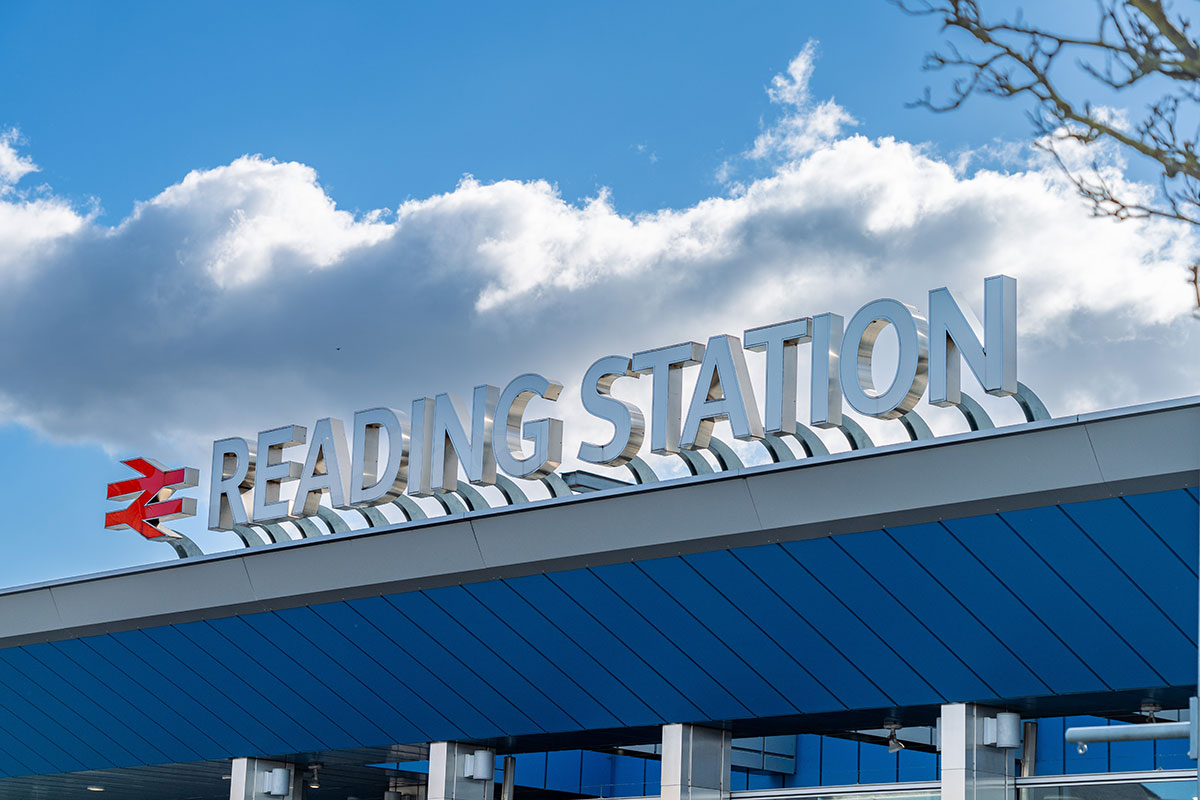Reading Station is used by around 14 million commuters each year and Network Rail plans to invest £400 million in a major refurbishment of the site – due for completion in 2015 – as part of a redevelopment of the surrounding area. With the company’s wide-ranging experience of transport
sector projects, FDS Consult was brought in to create a fire strategy and address the fire safety challenges of this open plan, large occupancy environment with the team’s innovative approach to fire engineering.
The station building is on three levels: the lower ground floor (basement) level will have retail units positioned around the edge and a seating area in the centre with escalator access to the ground floor; the ground floor houses the main concourse, ticketing and platforms and the bridge level will provide access to platforms and a seated café area. The refurbishment also involves construction of a new entrance
and the architectural design is based around three large columns which fan out to provide a feeling of openness and act as light wells, bringing natural light to the lower ground level. The brief for FDS Consult’s expert team was to work with the building to conserve the architectural impact of the
design whilst enhancing safety and ensuring exit routes and evacuation times were viable.
One of the most challenging aspects of the station layout was the extended size of the compartments and FDS Consult took a creative approach to addressing this, justifying retention of the open plan design whilst creating a fire strategy that would both ensure safe evacuation and underpin business continuity. FDS Consult’s experienced team achieved this by:
- Calculating expected occupancy loads for each level to accurately assess viable exit widths and evacuation times.
- Justifying existing exit widths on the lower ground level thanks to multiple exit routes (up the staircase to the ground floor and out, directly out to the parking area or via the subway)
- Specifying fire shutters for all retail units on the lower ground floor which will be linked to the fire alarm/smoke detection system so that any retail outlet where a fire is detected can be isolated quickly and all retail units can be compartmented should a fire be detected elsewhere in the
station. This would also limit the compartment size of the lower ground floor level. The shutters are programmed to drop to a distance of 2m from the ground for a limited period to allow means of escape before sealing off the retail unit completely.
The architectural columns created openness throughout the station which had significant implications for the dissemination of smoke. This was particularly pertinent to the bridge level café where the anticipated occupancy loads of 60 persons theoretically required two staircases as means of escape. FDS Consult used the team’s understanding of smoke behaviours to address these issues by:
- Using computer modelling to determine how long it would take to evacuate the bridge level using a single staircase and modelling smoke spread to prove that evacuation was possible within tenable limits, thereby avoiding the need for a costly second staircase.
- Introducing a natural smoke venting system that will complement the smoke venting provided by windows at bridge level. FDS Consult’s expert team specified vents on both facades to ensure fast dispersal of smoke regardless of wind direction and calculated the level of venting required to ensure safety whilst minimising costs and modifications to the architectural design.
Thanks to FDS Consult’s solutions-driven approach, the fire design for the station ensured that the redevelopment programme stayed true to the architect’s vision whilst achieving substantial cost savings.
Type of project: New build Refurbishment mixed use development
Client: Cargyle Group
Architect:Aukett Fitzroy Robinson

